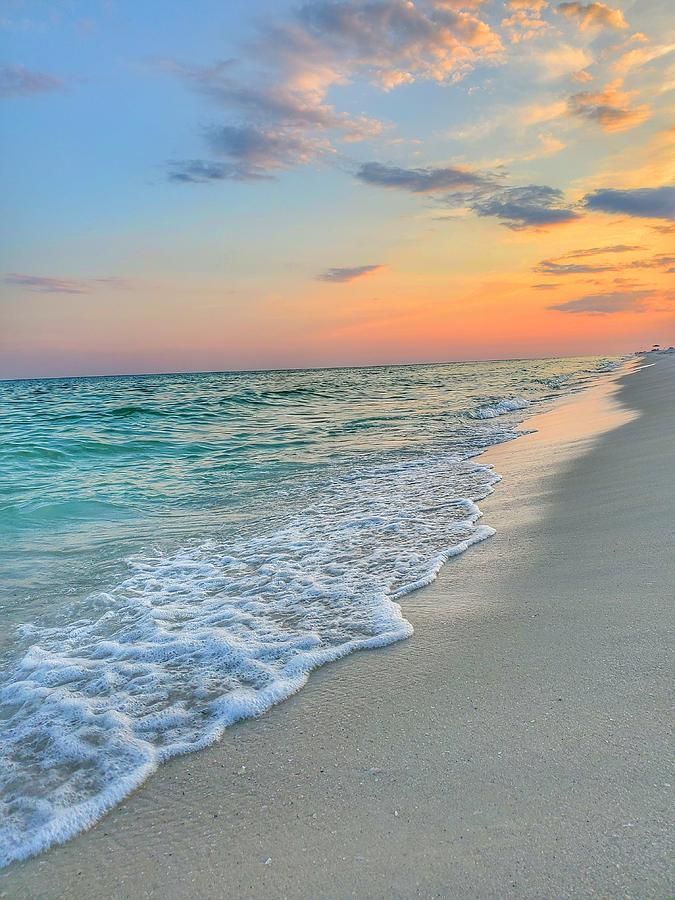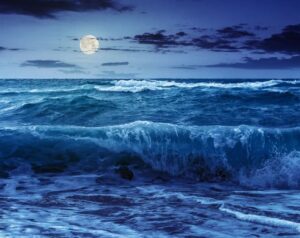
Shenali Dawson
Seashores can be found all over the world, from icy coastlines near the Poles to sandy beaches in hot, tropical areas. As well as making unique habitats (natural homes) for many plants and animals, seashores are also very important to people. Today, large areas of Earth’s 700,000-plus kilometer of seashores are in danger and in need of our protection. Seashores are places where the salty water of seas and oceans meets land made of rocks, mud, sand or other material. A seashore is the edge of the land and the edge of the sea. There are names for different kinds of seashores. If the rocks are tall and upright, they are known as cliffs. If the sand is smooth and slopes gently, it is a beach. Seashores are known as oceanic coasts, or marine or sea coastlines.
Water moves easily with waves, tides and currents, so seashores are never still. They are complicated habitats for nature, as only certain kinds of animals and plants can live there. Wildlife must be able to survive in the changing conditions that are typical of most seashores. Some seashores are not part of the world’s main network of seas and oceans. They are the seashores around the edges of large bodies of salty water that are isolated inland, such as the Caspian Sea and the Dead Sea.
Seashores are like battlegrounds, with a continuing struggle between land and sea. The outcome depends on factors such as the land’s hardness, and the strength of the winds and waves. Winds provide the energy to whip up waves that erode the shore. The sea’s power is immense. Winds, waves, tides and currents wear away (erode) the land. Big waves hit the shore with enough energy to throw around boulders the size of cars. Even small waves roll around tiny bits of rock that rub and scour the land. In some places the sea wins the battle along the shore. The land is gradually rubbed away, or parts collapse and slide into the water. The pieces, or particles, are swept away by waves, tides and currents. In East Anglia, England, coastal rocks are worn away by up to 5 meters each year. Houses that were once inland end up as rubble underwater.
How the seashore’s land resists the eroding power of the sea depends on the types of rocks. Hard rocks, such as granite, are tough and can resist erosion for centuries. Softer rocks, such as chalk and mudstone, erode several meters each year. Chalk cliffs in southern England are eaten away by waves, leaving piles of broken pieces at their base. In other places, the land wins the battle. New land can be formed from piles of particles, such as sand or silt, moved by the water from coasts elsewhere or from the deep sea. Particles sink and settle as layers, called sediments, that build up. Movements in the Earth can change seashores. Land can bend and buckle over centuries, so coasts slowly rise. Earthquakes can lift land by several meters in a few seconds. A volcano near the coast can spill its red-hot lava into the sea, where it cools as hard, new rock. Lava meets the sea in Hawaii. Sea water makes volcanic lava cool and harden.
Almost all seashores have tides, which affect the way the land is worn away. Tides alter the amount of time that a particular patch of the shore is underwater or exposed to the air, so they also affect coastal habitats and wildlife. The tidal range is the difference in height between high and low tide. In the Bay of Fundy in Canada it is 17 meters, and in parts of the Mediterranean Sea it is less than 0.3 meter. Tides are caused by the pulling power or gravity of the Moon and Sun, and the daily spinning of the Earth. A high tide occurs about 12.5 hours after the previous high tide, with low tides midway between
Spring tides are extra-high – the water level rises more than normal. They happen when the Moon and Sun are in line with the Earth, adding their gravities together every 14 days (two weeks). Neap tides are extra-low, when the Sun and Moon are at right angles, so their pulling strengths partly cancel each other out. A neap tide occurs seven days after a spring tide. Tides produce ‘zones’ along seashores, from the high tide zone to the low tide zone. Different seaweeds and animals are adapted to each zone. Ocean currents affect the seashore. A current flowing towards the shore can bring particles of sediment to add to the land. A current flowing away sweeps sediment out to sea. Currents also alter the direction and power of waves. If a wind blows waves at an angle onto a beach, each wave carries particles of sand upwards and sideways. When they recede, the particles roll back. Particles gradually zigzag along the shore – a process called longshore drift. Groynes built into the sea help to control it, so beaches don’t wash away.
On a typical seashore, the struggle between land and sea produces various features. Much depends on the balance between the sea’s wearing away of the land, and the formation of new land by particles settling in layers, known as sedimentation. Hard or tough rocks can resist the sea’s eroding power. They form tall cliffs and headlands that erode slowly. Softer rocks break apart more easily. The waves erode them at sea level, which is known as undercutting. The whole shore collapses as boulders tumble into the water. Waves and other shore-eroding forces may gradually cut through a headland, forming a cave. This can get worn through to form an arch of rock. When the arch collapses it leaves an isolated tall piece of rock, called a stack.
Many animals visit seashores. Some of them come to feed or breed. Others stop there to rest during long journeys or to escape danger such as predators or harsh conditions inland or out at sea. Others like to catch fish and crabs in the pools and shallows. Seals, sea lions and walruses are ideally suited to diving, swimming and feeding at sea. But they come ashore to beaches or rocks to rest and sunbathe. Seashores can be hit by many types of natural disasters. Among the deadliest are giant waves called tsunamis. These are usually set off by underwater earthquakes, volcanoes or landslides, which shake the seabed and push water into massive ripples that spread out until they reach a coast.
Even just walking along a shore or paddling in shallow water can be dangerous, especially in tropical regions. There may be poisonous animals such as jellyfish, weever fish, stonefish and shellfish known as cone shells, all of which have stings that can kill. Seashores have featured in empires and battles through the ages. Seafaring and trading centers, such as Constantinople (now Istanbul), Venice and London, were once hubs of great empires. Castles and forts keep out seaborne invaders. World War II’s D-Day seaborne invasion of France’s Normandy coastline in 1944 was the largest military event in history. In modern times, seashores have become places for fun, leisure and adventure. People relax, sunbathe, play games and sports, and view buildings and monuments. In many countries, more than half of all tourism business is along coasts. Cities, ports and industrial centers have been set up along seashores all over the world. There are harbors, docks, wharves and warehouses where cargo ships and passengers come and go, as part of global trade and travel. Factories making products are often sited along the coast. Cargo ships bring raw materials, such as coal, oil and metal ores, and take away finished products ranging from MP3 players to giant trucks. Unfortunately, factory wastes, and unwanted chemicals may flow or discharge along pipes into the sea.
With global warming and climate change, more extreme weather may come along coasts. Hurricanes, typhoons and other storms could happen more often, causing destruction along the shores. Today’s coastal flood defenses, such as sea walls and estuary barriers, will be overwhelmed.


